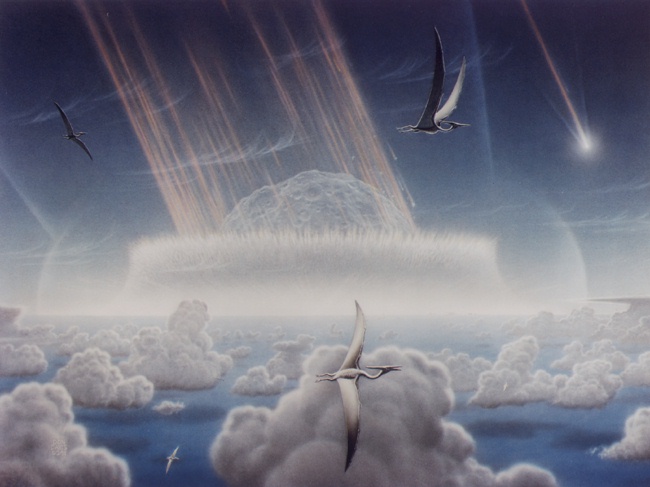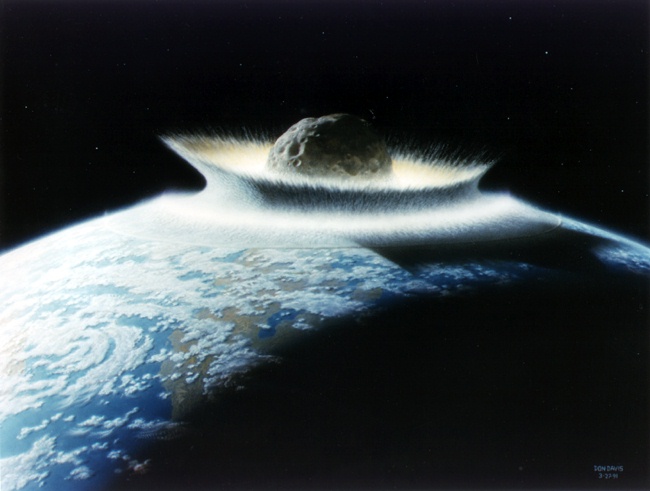Energy,
Effects & Average Rates of Impact
|
| stony
meteor of given diameter, impact speed = 20 km/s |
| |
|
|
|
|
|
|
|
|
|
|
|
| Diameter
(km) |
Event |
Energy
(TNT) |
Quake
(M) |
Crater
(km) |
Rate:
1 per |
| 0.001 |
fire
ball |
|
|
|
6
days |
| 0.003 |
fire
ball |
|
|
|
2.8
months |
| 0.01 |
air
burst |
59.5
kilotons |
|
|
4.1
years |
| 0.03 |
air
burst |
1.61
megatons |
|
|
58
years |
| 0.1 |
impact |
59.5
megatons |
6.8 |
1.3
x 0.2 |
1,000
years |
| 0.3 |
impact |
1,610
megatons |
7.7 |
3.8
x 0.4 |
14,000
years |
| 1 |
impact |
59,500
megatons |
8.8 |
12.5
x 0.6 |
260,000
years |
| 3 |
impact |
1.61
million megatons |
9.8 |
37.1
x 0.9 |
3.6
million yrs |
| 10 |
impact |
59.5 million
megatons |
10.8 |
122 x
1.2 |
66 million
yrs |
| 30 |
impact |
1.61 billion
megatons |
11.8 |
327 x
1.7 |
920 million
yrs |
| 100 |
impact |
59.5 billion
megatons |
12.8 |
847 x
2.2 |
few billion
yrs |
| |
|
|
|
|
|
| |
|
|
|
|
|
| Color
code scale of destruction: |
|
|
|
| blue |
pretty
sight, no destruction |
|
|
|
| green |
localized destruction, death |
|
|
|
| orange |
local
to regional destruction, death |
|
|
|
| red |
hemispheric
destruction, death |
|
|
|
| black |
global destruction,
death |
|
|
|
| |
|
|
|
|
|
| |
|
|
|
|
|
| Energy
released in past events: |
|
|
|
| Hiroshima atomic bomb
(1945) |
20 kilotons TNT |
| Bikini Atoll H-bomb
"Bravo" (1954) |
15 megatons TNT |
| Tunguska air burst (1908) |
20 megatons TNT |
| Barringer Crater, AZ
(47,000 BC) |
49 megatons TNT |
| large fragment of SL-9
Jupiter (1994) |
5 million megatons
TNT |
| Chicxulub (65 million
BC) |
100 million megatons
TNT |
| |
|
|
|
| Numbers and
destructive effects presented here are approximate, and depend upon
details such as impact speed, composition of impactor, impact site
(land, ice sheet, or ocean), and other factors. Not all of the
kinetic energy is available upon impact (or even released all at once),
but the fraction that is grows roughly with mass of the impactor. The
impact rates, especially for the larger objects, have the largest
uncertainties. Some of the information presented here has its origins
in Doug Hamilton's web
page. |
|

